Jordan Walker’s 2024 has not started as most people expected or hoped for. After a productive 116 wRC+ in his rookie season at age 21, Walker currently has a 46 wRC+ through 63 plate appearances. With a slash line of .164/.238/.273 and no home runs, it’s safe to say that a sophomore slump may be in the Cards for Walker.
By “safe,” I mean: let’s generalize the development of a 22-year-old who is barely 10% into a full season’s worth of plate appearances. The grind of baseball is what’s so compelling during the regular season. Say Walker figures it out immediately after this gets published in late April/early May, the slow start to the season gets forgotten and will be chalked up to the lovely Midwest spring weather.
The former consensus top-15 prospect is having a rough start to the season, but a young player’s April performance isn’t the end-all-be-all for that year. Last year, 27 players had an April wRC+ lower than 75. Nine of those players were better than league average for the rest of the year, and that group had a younger average age (26.6) than the group that didn’t perform better than league average (28.3). Four of the better performers, Triston Casas, Riley Greene, Bobby Witt Jr., and Spencer Torkelson, were all in their sophomore campaigns.
Walker has flaws similar to those of two other stars who have figured it out at the big league level: Aaron Judge and Vladimir Guerrero Jr.. With all three players having prospect pedigree before their debut, following the path of how Judge and Guerrero Jr. succeeded with their flaws can be insightful for Walker.
According to FanGraphs, all three players have at least 70-grade raw power. While Judge and Guerrero Jr. have enough of a track record in the majors to justify those scouting grades, Walker is still on the proving ground.
He has flashed his big raw power potential with a 114.3 mph max EV in 2023. In the Statcast era (since 2015), only 29 hitters 21 or younger have recorded an exit velocity greater than 110 mph, and Walker’s 114.3 mph ranks 12th highest. The highlight of that batted ball is the crux of Walker’s problem.
80% of Walker’s hard-hit batted balls have either been on the ground, to the middle & opposite field, or both. As for where power is most effective, the pull side is the best place to be.
Compared to the rest of the league last year, Walker’s overall batted-ball distribution stands out in terms of straightaway groundballs and opposite-field flyballs. This batted ball distribution looks similar to Guerrero Jr.’s 2021, which was his breakout 48 HR season.

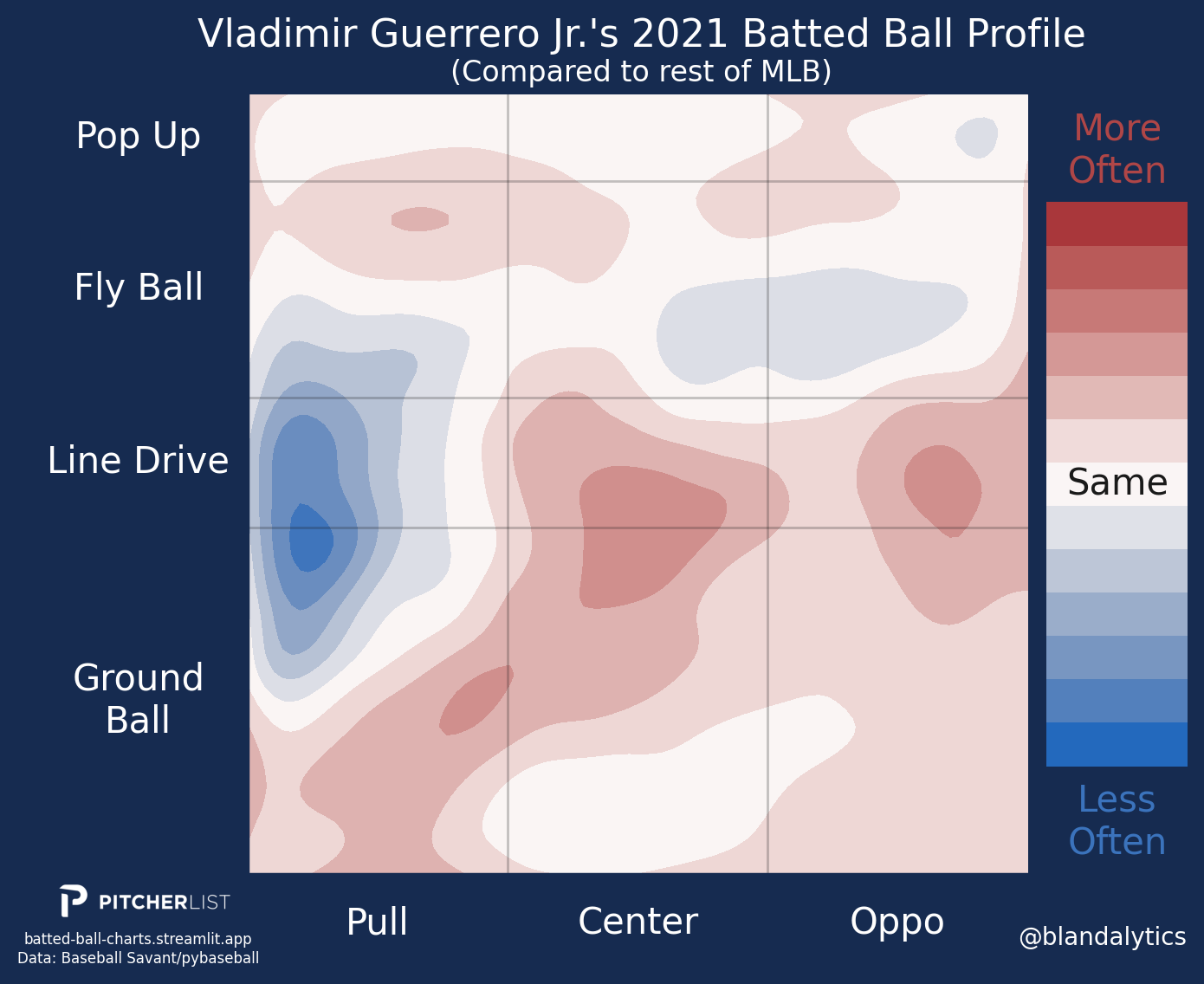
Guerrero Jr. did have a 10% higher hard-contact rate than Walker in these years, the difference between elite and above average, but he found success with a similar batted ball distribution. Guerrero Jr.’s pulled flyballs are the biggest difference, whereas Walker’s is infrequent in getting to a pulled flyball.
The big ask for Guerrero Jr. early in his career (and still today) was to elevate and pull the ball. His jump in power from 2020 to 2021 didn’t come from a change in spray direction but from turning groundballs into line drives.
Walker had similar requests heading into 2024, when it was easy to dream of his potential if he started elevating and pulling batted balls. However, he has gone in the opposite direction of Guerrero Jr., maintaining his groundball rate while trading line drives for flyballs.
Despite a doubled barrel rate early on, Walker isn’t seeing results. Out of the 97 hitters with at least five barrels, Walker has the lowest wOBA (.256). The next closest hitters, Lawrence Butler and Jackson Merrill, are at .561, and the league has a 1.205 wOBA on barrels in 2024. The reason for the poor results? Almost all of his barrels are to the biggest part of the ballpark: straightaway center.
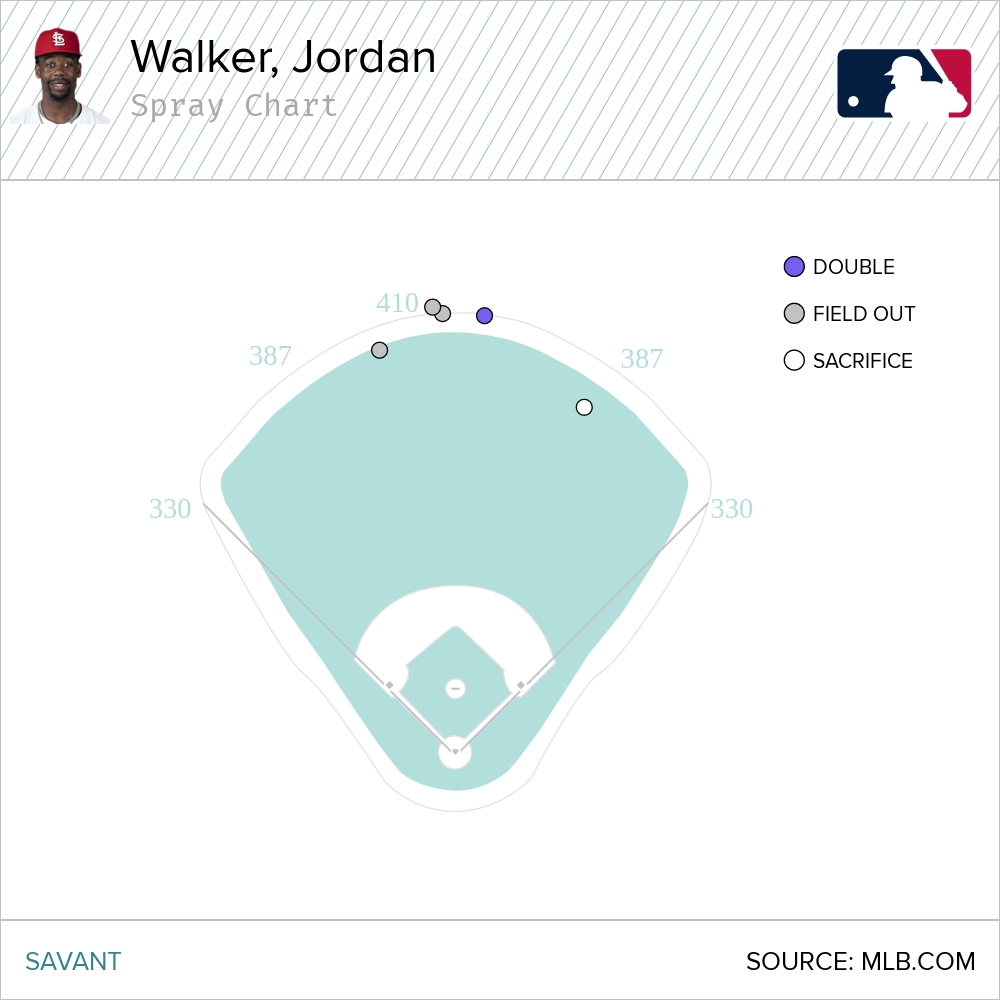
Sure, he may have three home runs if this was in July, but he’s not the only hitter dealing with cool April weather.
A Spring Training article from the St. Louis Post-Dispatch discusses his changes for the upcoming year. Specifically, he and the team want to get the ball in the air more, drive the gaps, and roll over groundballs less frequently. However, the early result of these changes is that the middle third of the zone becomes flyballs, removing Walker’s line drive nitro zone.
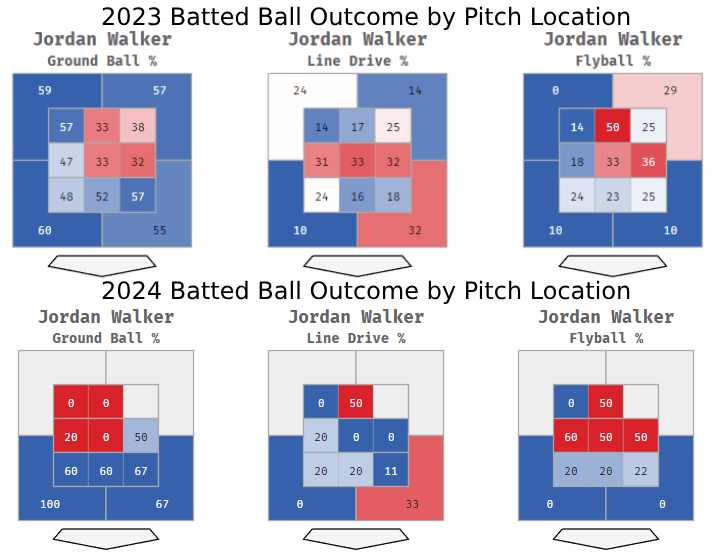
Guerrero Jr.’s change from 2020-2021 took the middle third of the zone and elevated everything, allowing him to get to his power. Even though the batted ball distribution looked similar to Walker’s 2023, he hit the pitches in his wheelhouse and did damage. Walker, in 2024, is not taking advantage of those pitches.
That brings us to Aaron Judge, a similarly imposing figure at the plate. Walker and Judge stand 6’5″ and 6’7″, respectively, wielding batting stances that remind opposing pitchers how tall they are. Their size leaves a hole in the bottom third of the zone, but they differ in their approach.
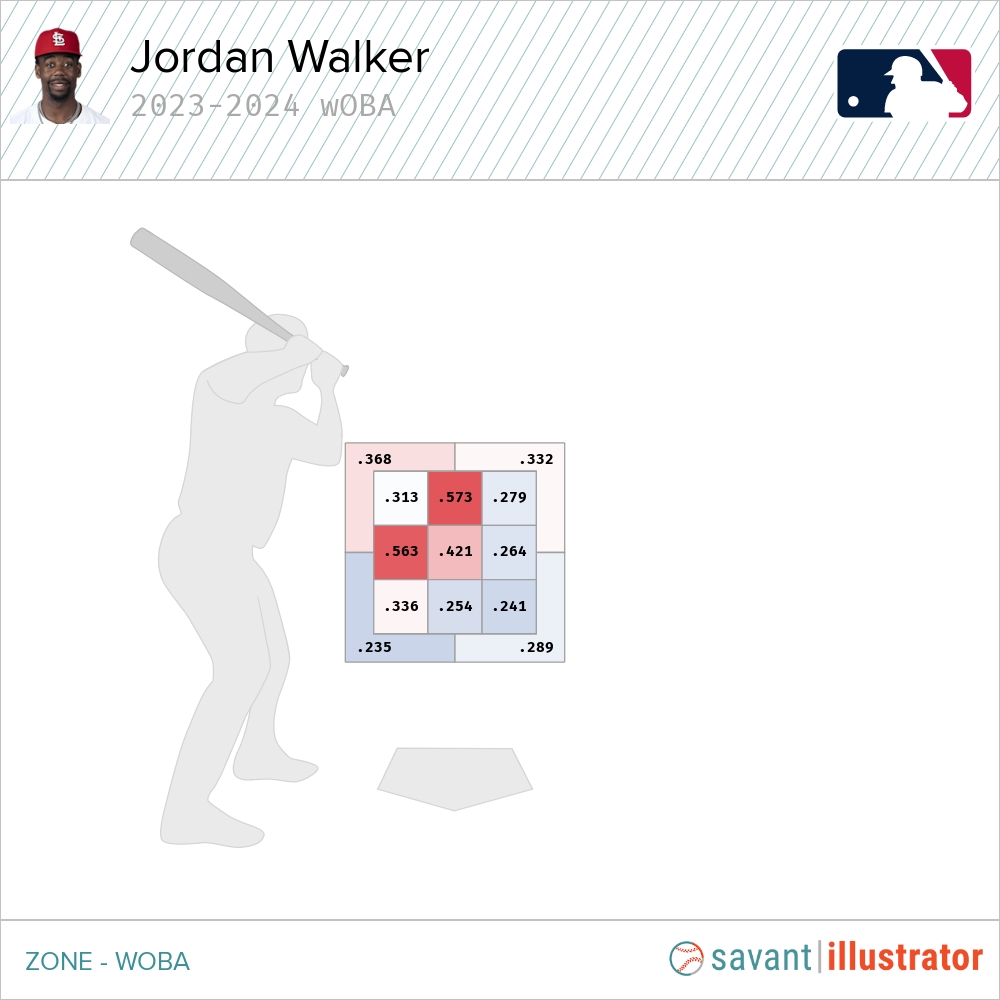
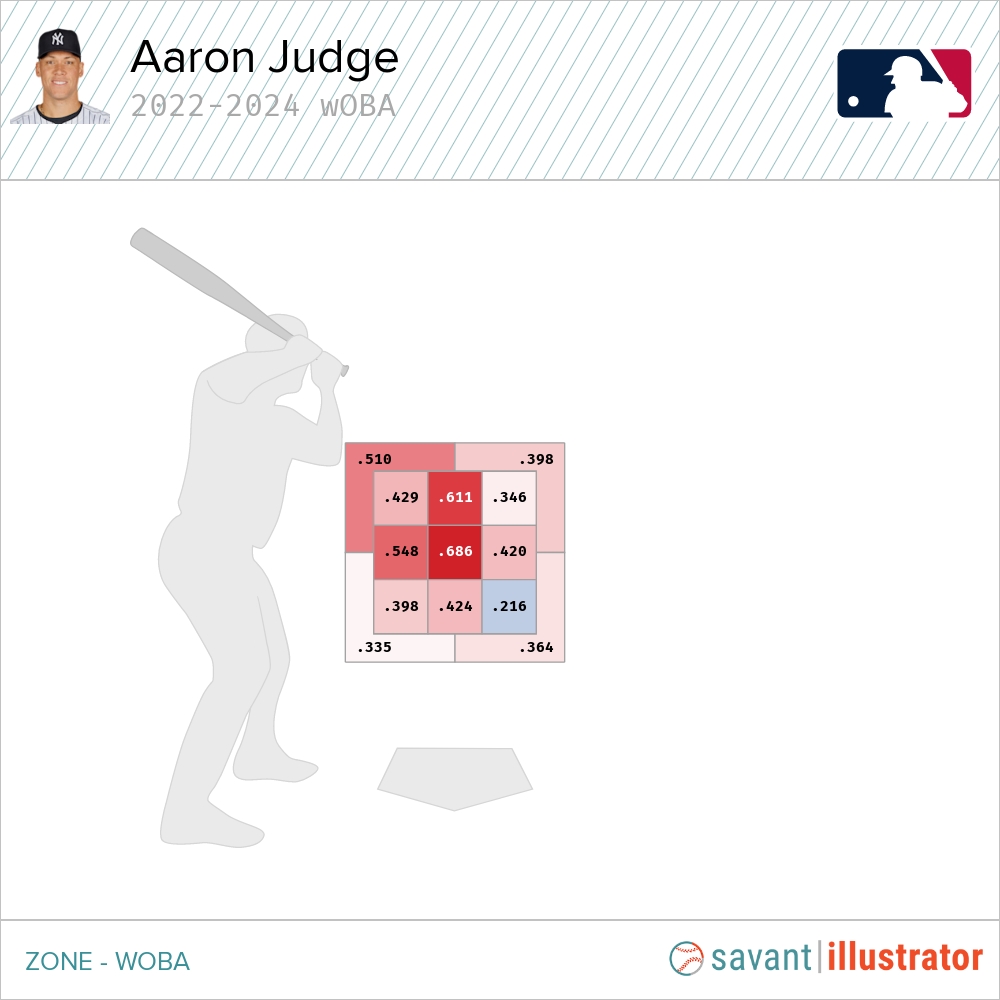
Albeit at a different level, both players struggled on lower pitches compared to the rest of the zone. Looking at whiff locations, there’s even more similarity between the two.
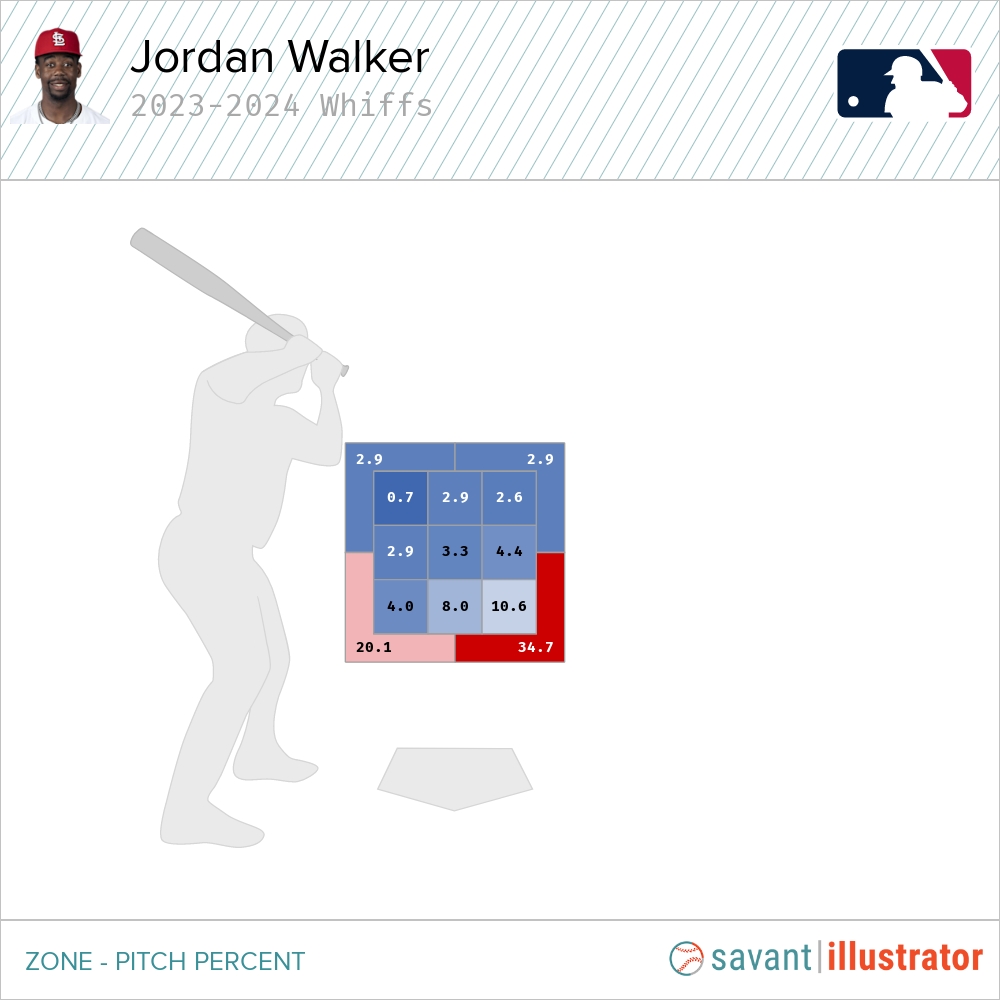
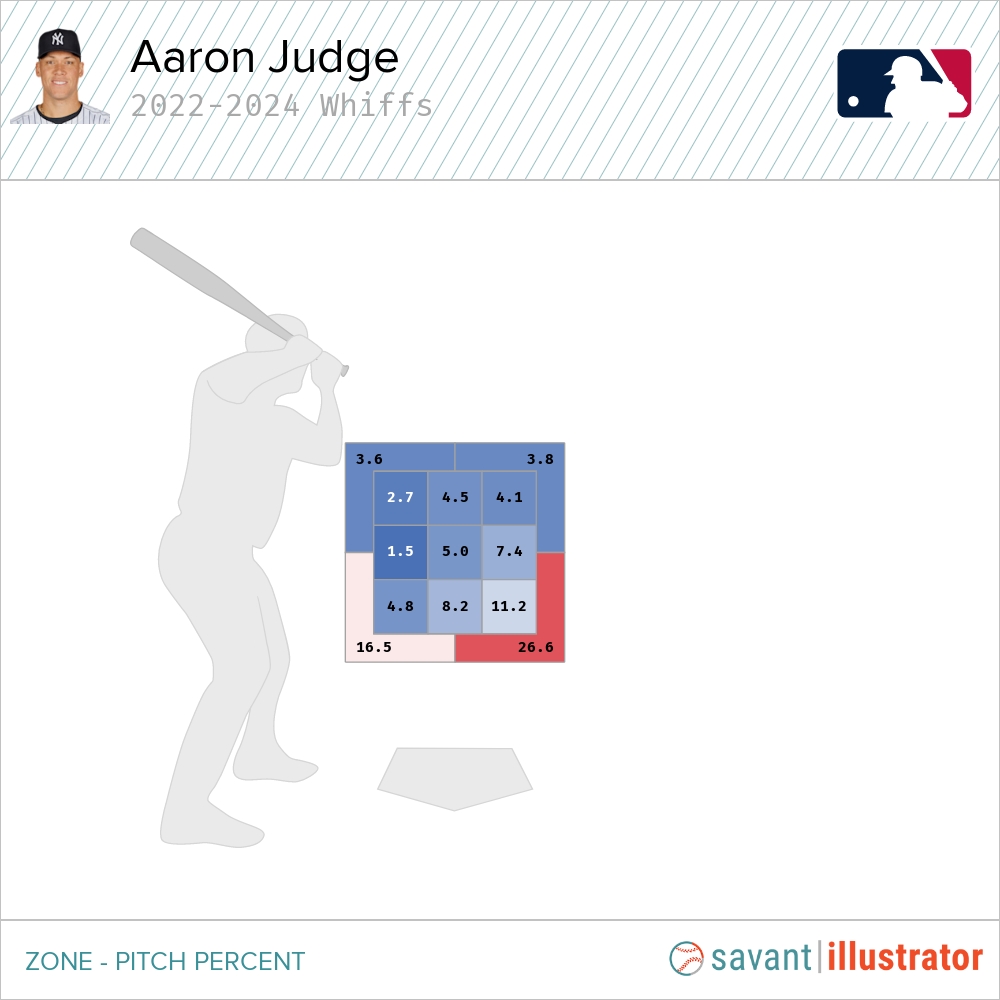
Most hitters aren’t going to fix all of the holes in their zone, and Walker’s size almost ensures that down-and-away will cause him trouble for most of his career. He can take a step forward in performance by hitting pitches in his wheelhouse. Instead, the 2024 Walker is trying to get to the down-and-away pitch, exposing him everywhere else.
Last year, his nitro zone was middle-in, where he could drop the bat head and get to just about anything. All five of his barrels are on low or away pitches this year. It’s hard to put those pitches over the fence, even when squared up.
Walker doesn’t get to high pitches particularly well, leaving him with a small area for success. When pitchers know that down-and-away is the game plan, it’s generally easy to avoid that small band on the other side of the zone.
Especially with a new approach to pitch locations this year, he’s continuing to struggle with high fastballs, a pitch that he should be able to (and want to) get to. Across 2023 and 2024, Walker has seen 30 fastballs middle-up in the zone. 60% of those pitches have been fouled off, most looking like Walker just missed a 450 ft. bomb. He has put five in play, but the resulting .413 xwOBA is uninspiring.
Meanwhile, Judge can square up the high fastball, about the worst place to pitch to him.
Walker needs to determine which part of the zone he wants to expand to: either the top-third or bottom-third. Having such a small zone for damage will restrict him from displaying his 80-grade power as frequently as Cardinal fans want him to.
His early changes have resulted in trying to get to the down-and-away breaking pitches, which he’s still missing, and it’s taking away from what he’s previously done well. He can turn this year around if he focuses on hitting the pitches he wants to hit rather than what pitchers want him to hit. Big league adjustments are hard, but he’s still young, and the sky is the limit for the former top prospect.

I see a lot of hard ground balls and soft fly outs. Admittedly, after I dropped everywhere I stopped paying attention to him. He looks lost at the plate.